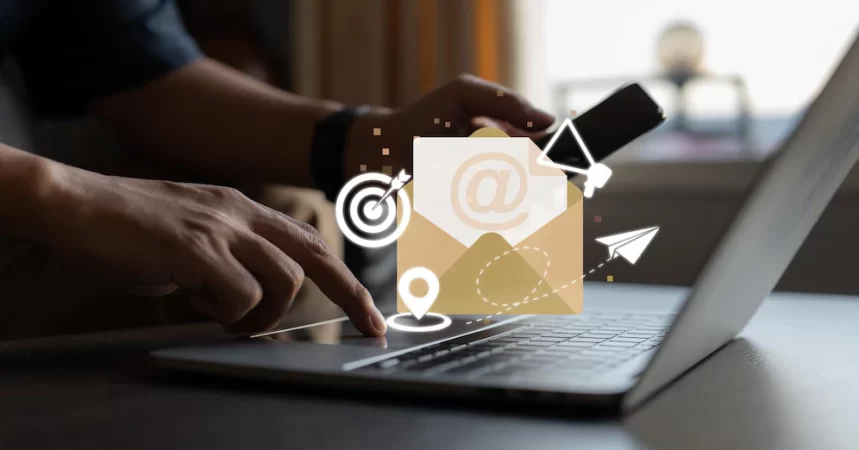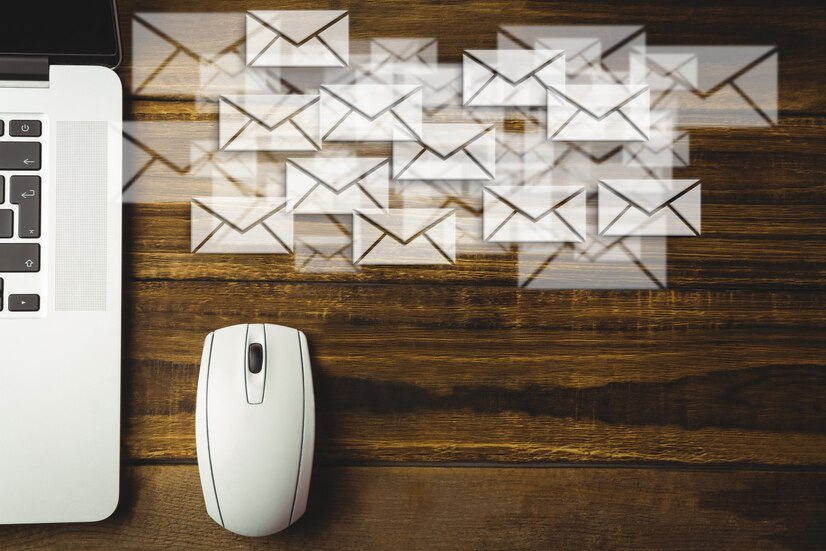Resources for E-Commerce Business Success
Nabamita Sinha, 3 days ago

To ensure your emails reach your customers’ inboxes and avoid being marked as spam, it’s essential to understand the rules and best practices that govern email deliverability.
By following these guidelines, you can increase your chances of reaching your recipients and effectively conveying your offers.
Let’s explore how you can stay out of spam and enhance your email deliverability.

Email deliverability is a pivotal aspect of email marketing, encompassing the journey of an email from its successful transmission to its final placement in the recipient’s mailbox.
The ultimate goal of email deliverability is to ensure that your messages reach the recipient’s primary inbox, or even more ideally, the primary tab in cases of email clients with categorized inboxes like Google’s Promotions tab.
Deliverability isn’t solely about delivery; it’s about landing where it truly matters and eliciting real human engagement, including opens, clicks, replies, forwards, and conversions.
However, it’s important to note that good email delivery doesn’t automatically equate to good deliverability. You might successfully deliver emails, but if they end up in the spam folder, your deliverability is compromised.
Here are the four key factors that significantly influence email deliverability and shape your reputation as a sender:
Your sending practices play a crucial role in email deliverability. Consistency, engagement, and adherence to industry best practices are essential. Sending relevant, permission-based emails and maintaining a positive sending history is instrumental in establishing trust with ISPs (Internet Service Providers).
Your email list quality matters. Sending to a clean and engaged list ensures that your emails are well-received. Conversely, sending to outdated or purchased lists can lead to high bounce rates and spam complaints, which adversely impact your sender reputation.
Crafting your email content with care is vital. Avoid using spammy elements like excessive capitalization, multiple exclamation marks, or misleading subject lines. Thus, focus on providing valuable, relevant, and well-formatted content that resonates with your audience.
Your sending infrastructure, including your email service provider and the technical setup of your emails, can influence deliverability. Implementing email authentication protocols like SPF, DKIM, and DMARC, along with a properly configured sending environment, contributes to successful inbox placement.

But when should you consider testing it?
There are two key scenarios when email deliverability testing becomes imperative:
Prior to launching your cold email campaign, it’s essential to conduct email deliverability testing, particularly if your campaign is automated. This proactive step ensures that your emails are well-prepared to reach the intended recipients’ inboxes rather than getting lost in the spam folder.
The second scenario arises during an ongoing cold email campaign, especially if you suspect low email deliverability, face blocking issues, or consistently find your emails relegated to the spam folder. In such cases, it’s crucial to take measures to enhance your sender reputation and perform regular spam checks.
The effectiveness of your email campaigns is closely tied to your sender’s score, which hinges on various factors. Therefore, it’s prudent to incorporate email deliverability testing as an integral part of each campaign.
There are several types of email deliverability tests that play a crucial role in ensuring your emails reach their intended recipients effectively:
Employing these methods for testing email deliverability ensures that your email campaigns have the best chance of success by reaching the right audience without getting caught in spam filters.
Related: Email Marketing For B2B Vs. B2C – Key Differences And Strategies
Regularly integrating email verification into your contact list maintenance is essential, and keeping a close eye on your email deliverability rates is equally crucial.
You can easily assess and receive comprehensive reports on email address deliverability using tools like GlockApps.
GlockApps stands out as an excellent choice in this regard. After confirming the validity of your email addresses, you can leverage this online tool to evaluate the overall email deliverability of your outgoing messages. This service is instrumental in identifying issues with your email content, verifying blacklist status, and determining whether a specific ESP (Email Service Provider) is impeding your email delivery.

To enhance the chances of your emails reaching your recipients’ inboxes rather than marking as spam, here are two highly effective strategies.
Over time, it’s common for some subscribers to disengage from your emails or undergo changes in their email addresses due to various external factors. Continuing to send emails to such recipients can result in minimal engagement due to these circumstances.
For this reason, regularly cleansing and maintaining your email list is crucial for sustaining a healthy email deliverability rate.
Here are a few best practices to ensure optimal email list hygiene:
Hard bounces occur when emails are sent to invalid or no longer exist addresses. Identifying and promptly removing these addresses from your list is essential to maintaining a clean and accurate recipient database.
Establish a suppression list that includes specific categories of users. These categories typically consist of:
Implementing a suppression list ensures that you refrain from sending emails to these segments and helps prevent potential issues that can affect your email deliverability.
Create and implement a sunset policy that outlines specific criteria and timeframes for moving recipients to the suppression list. This policy helps you proactively manage subscribers who may no longer wish to receive your emails or those who have become unresponsive. By adhering to the sunset policy, you maintain list hygiene and uphold your sender reputation.
By following these email list hygiene best practices, you can enhance your email deliverability, improve engagement rates, and foster a more positive sender-recipient relationship, ultimately benefiting your email marketing efforts.
Establishing the right email infrastructure involves a critical component: authenticating your sender domain.
Email authentication serves as a means to communicate to the recipient’s server that the email originates from a legitimate domain, assuring that it is not a fraudulent attempt. This step is essential to prevent your emails from regulating to the spam folder and to guarantee that they reach your subscribers’ inboxes directly.
There are several methods for authenticating your email, each serving a unique purpose:
SPF is an email authentication mechanism is to verify that incoming emails originate from a legitimate sender rather than a relay server. It helps prevent email spoofing and ensures the authenticity of the sender’s domain.
DKIM is a technique that ensures the integrity of email messages during transmission. It involves public-key encryption to secure the contents of the message. The domain name in the DNS finds an association with the digital signature. This allows the recipient’s system to verify the message’s authenticity using the public key. Therefore, this method safeguards against modifications to the email during transit, providing email authentication.
DMARC is a robust email authentication protocol that combines SPF and DKIM techniques to verify the legitimacy of an email. It goes a step further by thwarting fraudulent messages sent from specific domains. DMARC acts as a gatekeeper, enhancing email security by preventing spam or phishing attacks.
Beyond the concerns of email deliverability, finding your emails in the dreaded spam folder can significantly hinder your communication with customers and users. The reassuring part is that the typical causes of the spam mark, as per our discussion earlier, are quite straightforward to steer clear of.
By adhering to these best practices, you can proactively mitigate a multitude of common deliverability challenges. This proactive approach ensures that your emails not only reach your recipients but also stand a better chance of being received positively.
Read Also:
Ankita Tripathy loves to write about food and the Hallyu Wave in particular. During her free time, she enjoys looking at the sky or reading books while sipping a cup of hot coffee. Her favourite niches are food, music, lifestyle, travel, and Korean Pop music and drama.